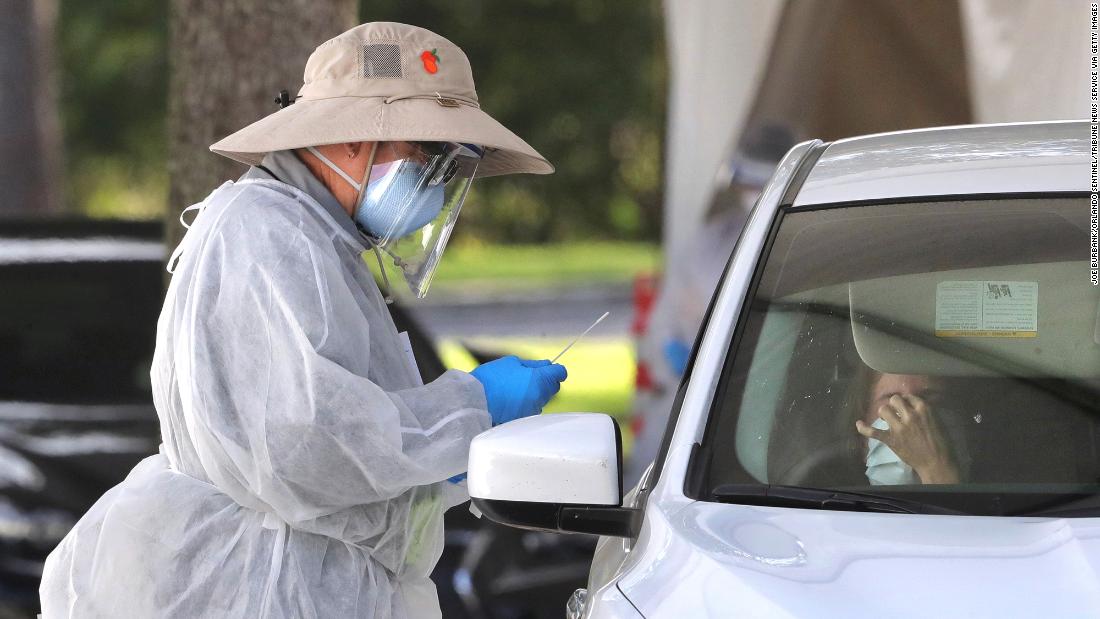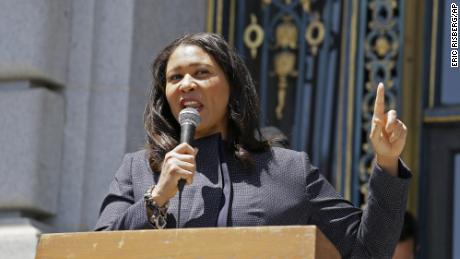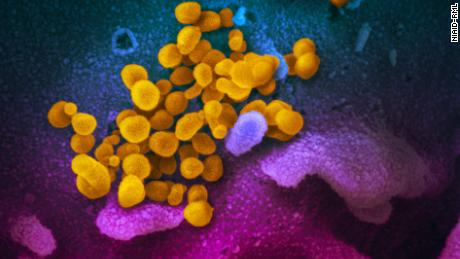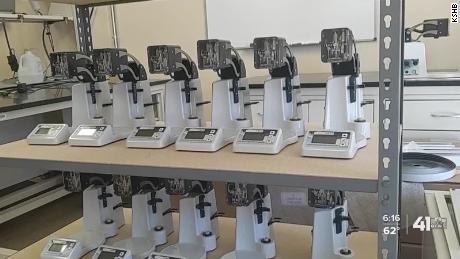US coronavirus cases surpass 9 million driven by ‘silent epidemic’ of asymptomatic infections
The US added 1 million new Covid-19 cases only 14 days after the nation hit 8 million cases, and multiple states continue reporting their highest daily case counts since the pandemic began, according to data compiled by Johns Hopkins University This is the fastest the country has recorded 1 million new cases since the pandemic began.
The latest surge of cases appears to be driven by patients with no symptoms, said Dr. Robert Redfield, the director for the US Centers for Disease Control and Prevention.
A “silent epidemic” of asymptomatic Covid-19 infections is “moving amongst 12- to 30-year-olds” and then making the jump to older people, Redfield told SiriusXM Doctor Radio Reports on Friday.
“This is what is driving the expansion that we’re seeing in the outbreak across the country right now,” he said.
A positive diagnosis every second
Daily Covid-19 cases in the US hit a new high once again on Friday when health officials reported 91,744 cases, topping previous high of 88,521 cases on Thursday. The top five Covid-19 case days have all occurred in the last eight days.
In total, the US has 9.03 million cases and 229,594 deaths due to the virus, according to Johns Hopkins.
In Florida, health officials reported more than 5,500 cases on Friday, pushing the state’s case count past 800,0000 cumulative cases. Florida is the third state to surpass that mark, behind California and Texas, according to Johns Hopkins data.
Nine other states reported their record high single-day of new cases ever on Thursday, Johns Hopkins reported: Illinois, Indiana, Maine, Michigan, Minnesota, New Mexico, North Carolina, North Dakota and Ohio.
“Today, we now have one person being diagnosed (with) coronavirus every second,” said former Baltimore Health Commissioner Dr. Leana Wen said Friday. “We have one American dying of coronavirus every two minutes, and that number is increasing.”
Wen, an emergency medicine physician, told CNN’s Wolf Blitzer that she is most concerned about the rate of test positivity. In some states, she said one in two people being tested are testing positive.
“That means that we’re not doing nearly enough testing, and that every person who tests positive is a canary in a coal mine,” she said. “There are almost certainly to be many more, dozens of other cases, that we’re not detecting, and that escalation is going to increase in the weeks to come.”
And it could get much worse.
“If states do not react to rising numbers by re-imposing mandates, cumulative deaths could reach 514,000 by the same date,” the IHME said in its latest forecast.
“The fall/winter surge should lead to a daily death toll that is approximately three times higher than now by mid-January. Hospital systems, particularly ICUs, are expected to be under extreme stress in December and January in 18 states.”
People who live with Covid-19 patients are easily infected, study says
“Substantial transmission occurred whether the index patient was an adult or a child,” researchers said.
The study, published in CDC’s Morbidity and Mortality Weekly Report, followed households in Nashville and Marshfield, Wisconsin, from April to September, and included 101 people initially infected with Covid-19 and 191 people they live with.
A 53% household infection rate is higher than what has been documented so far. Much of the related research to date has reported a 20-40% infection rate. For this study, household members weren’t just tracked through contract tracing, but were trained to track their symptoms and self-collect samples to be tested for coronavirus for 14 days.
States continue to break daily case count records
New Jersey Gov. Phil Murphy announced 2,089 cases Friday, marking the state’s highest one-day total since May.
Murphy told CNN Friday that he attributed the rise in cases to the cold, “fatigue” and indoor private gatherings.
South Dakota reported a record daily high of Covid-19 cases on Friday, with 1,389 new cases.
Forty-three states reported at least 10% more new Covid-19 cases in the last week compared to the previous week, according to data from Johns Hopkins. Two — Oklahoma and Louisiana — reported declines of 10% or more.
Washington reported more than 1,000 new Covid-19 cases Friday, the state’s health department said. It’s the first time since mid-July that the state has seen more than 1,000 positive tests in a single day.
“In today’s numbers, we see more evidence that the surge isn’t coming — it’s here,” the department said in a statement.
New Mexico reported more than 1,000 cases for a second day in a row on Friday, and the state’s total Covid-19 death tally surpassed 1,000, which New Mexico Gov. Michelle Lujan Grisham called “an unfathomable tragedy.”
“I plead with New Mexicans: Take this virus seriously. Don’t wait for the illness and death it delivers to arrive on your doorstep, within your family, to take the precautions we know work. Recommit to the mindset we all had in March and April and May: No errand is worth your life, no visit with friends and family is worth their lives,” she said in a statement. “Please, fight through the impulse to surrender to the virus, to fatigue, to whatever it might be.”
Illinois reported a daily high of new cases for the second time in a week with 6,363 new cases Thursday.
Minnesota, North Dakota and Ohio also reported their highest daily Covid-19 totals Thursday, with 2,872, 1,222 and 3,590 new positive cases respectively.
Officials warn against traditional get-togethers
The Oregon Health Authority reported 575 new cases Thursday, also breaking the state’s single-day record.
“Preliminary data show this increase reflects continued widespread community transmission resulting in small clusters and outbreaks statewide,” the OHA said in a written statement. The state’s coronavirus death toll is now 673.
Health officials are strongly encouraging Oregonians to forgo traditional Halloween trick-or-treating and get-togethers this year.
Murphy urged New Jersey residents not to take family members out of nursing homes for Thanksgiving.
“It’s cold, it’s rainy, our numbers are up. It gives me no joy to say you can’t bring mom or dad out of the nursing home,” Murphy said. “It gives me no joy to say you can’t have your normal Thanksgiving.”
Higher rates of Covid-19 after Trump campaign rallies
The 17 rallies occurred between August 17 and September 26. CNN evaluated the rate of new daily cases per 100,000 residents at four weeks before the rally, on the rally date, and four weeks after the rally at the county level and at the state level.
Of the 14 host counties that had increased infection rates, eight of them had declining rates of infection in the month before the rally. The other six counties already had increasing rates of infection in that preceding month.
CNN’s Haley Brink, Jay Croft, Lauren del Valle, Andrea Diaz, Maggie Fox, Jennifer Henderson, Kay Jones, Nadia Kounang, Lauren Mascarenhas, Brad Parks, Andy Rose and Anna Sturla contributed to this report.
![]()










